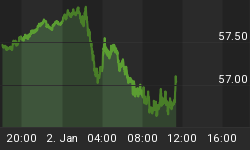The subprime mortgage crisis is merely the tip of a very large iceberg. Beneath the surface lies not only a sea of tenuous loans to prime borrowers, but also an assortment of other liabilities backed by auto loans and credit card debit. Now that home equity extractions, "zero percent auto financing" and "zero interest" credit card rollovers are much harder to come by, Americans must do without the credit lifelines that have previously kept them afloat.
Similar to the home buying market, lax lending standards in the automobile marketplace have led to gross distortions that must be painfully corrected. For years standard practice allowed millions of car buyers to trade in old cars (that were worth less then outstanding loans), and roll the balances into new low interest rate loans for new cars. Although these "E-Z" financing terms allowed many over-stretched buyers to stay current on their debts, and vendors to move bloated inventories, they immediately saddled lenders with loans that far exceeded the value of the collateral. Such a situation encourages defaults and is toxic to lenders. Vendor financing (especially with publicly traded companies focused on short-term results) compounded the problem as conflicts of interest encouraged lenders to sweep these problems under the rug.
The same phenomena also occurred with credit cards. For years, low short-term interest rates and low defaults encouraged banks to aggressively seek new customers. The competition became so intense that balance transfer wars enabled debtors to constantly stay one step ahead of default by transferring their balances to new issuers who often permitted low, or zero, interest for up to six months. When the teaser periods expired there was always another card company willing to accept a balance transfer on similarly friendly terms.
For a while at least, this high wire lending act in the auto and credit card sectors was kept aloft by repeated waves of mortgage refis in which extracted home equity was used to consolidate other consumer debts. By turning higher interest rate, non-tax-deductible consumer debt into lower rate, tax deductible mortgage debt, consumers were able to temporarily manage their debts. In addition, since home equity extractions often exceeded the amounts of other debts, the extra cash in homeowner's pockets temporarily made higher mortgage payments more affordable. Plus with their credit cards paid off, card holders were not only free to run their balances back up again, but their improved credit scores resulted in even more credit card offers.
Because defaults were low, bonds backed by auto loans and credit card debt were rated AAA, allowing Wall Street to easily package the debt for investors. However this is all coming to an end. Lenders, burned by subprime losses are cutting back. The home equity ATM has been shutdown and credit card and auto loan delinquencies are already at record highs. In fact, to make up for losses, credit card companies have been raising their rates, thus compounding the problems for those struggling to pay. Auto lenders will no longer allow potential buyers to roll their negative auto equity into new loans.
It was inevitable that all of this debt would eventually catch up to us. Americans are now so upside down on their auto loans that new car sales will collapse; and when many loans go sour lien holders will be stuck with substantial losses on repossessed vehicles. As the music finally stops for serial credit card balance transferors, the inability to renew low teaser rates means that fewer borrowers will be able to afford their payments.
As delinquencies continue to rise rating agencies will downgrade bonds backed by auto loans and credit card debt, inflicting subprime type losses on a much wider scale. As defaults increase and losses mount, credit will tighten like a noose around the neck of America's consumer based economy. Just as subprime homebuyers are being shut out of the housing market, soon Americans will find that their credit is no longer good at car dealerships or department stores. American consumers that want to buy will need to be prepared to pay cash.
The bottom line is that a host of factors that temporarily allowed default risks to be underestimated and credit to be miss-priced have disappeared. As a result, Americans have simply borrowed more money then they can possibly repay. Ratings agencies once again missed the boat by feeding garbage data into computer models and blindly accepting what came out.
For a more in depth analysis of the inherent dangers facing the U.S. economy and the implications for U.S. dollar denominated investments, read my new book "Crash Proof: How to Profit from the Coming Economic Collapse." Click here to order a copy today.
More importantly, don't wait for reality to set in. Protect your wealth and preserve your purchasing power before it's too late. Discover the best way to buy gold at www.goldyoucanfold.com, download my free research report on the powerful case for investing in foreign equities available at www.researchreportone.com, and subscribe to my free, on-line investment newsletter at http://www.europac.net/newsletter/newsletter.asp.
















